Fear Street: Prom Queen Review: A Slasher Saga That Continues To Amaze (Thanks to the Nostalgia Effect)
After the incredible success of the Fear Street trilogy, Netflix returns to Shadyside with Fear Street: Prom Queen, available from 23 May 2025 on the platform. Directed by Matt Palmer and co-written with Donald McLeary, the film sinks its teeth into the most juicy clichés of the ’80s slasher, mixing blood, black humor, and sequins. Set in 1988, this new chapter pushes the accelerator on adolescent rivalries, year-end dances, vitriolic gossip, and a hooded figure that begins to eliminate, one by one, the aspiring queens of the dance. With a cast that mixes young promises such as India Fowler, Ariana Greenblatt and Fina Strazza with more established names such as Lili Taylor and Katherine Waterston, Fear Street: Prom Queen tries to renew the franchise without giving up explicit references to cornerstones such as Carrie, Scream, is I Know What You Did Last Summer.
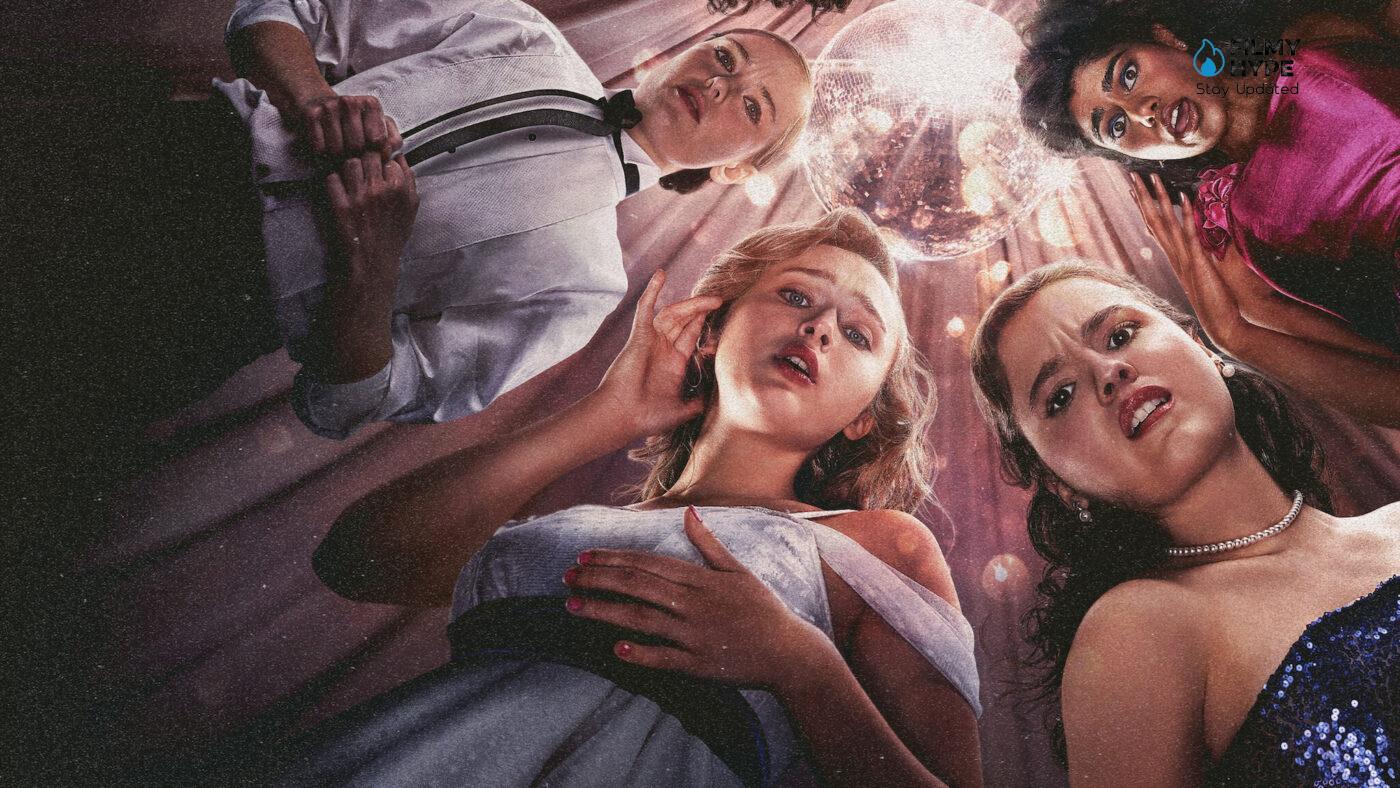
There is no doubt, form, colors, music, design, and mood. The saga of Fear Street Netflix license plate works. Perhaps because behind the four films, there are the literary inspirations of R.L. Stine, and perhaps because of the nostalgia effect, mixed with the blood that flows in rivers, it always stimulates a certain effect, catching the attention of the spectators. One would almost say: Why aren’t all the original Netflix films like this? A question that falls into the void of a long sigh, but functional to introduce our opinion about it, Fear Street: Prom Queen, directed by Matt Palmer and written together with Donald McLeary (drawing the subject from the novel Stine’s The Prom Queen, published in 1992). Scanning the field from misunderstanding, the film, in ninety dry minutes, aims at hard and pure entertainment, leafing through the rules that subject and direct the structures of the best slasher movies.
Fear Street: Prom Queen Review: The Story Plot
In the summer of 1988, the young high school students of the town of Shadyside prepare for the most awaited evening of the year: the prom. Spangles, bright clothes, and impeccable hairstyles frame the competition for the title of Prom Queen, while tensions and rivalries light up among the candidates. Most girls challenge each other popular high school, guided by the fearsome e spoiled alpha girl Tiffany Falconer with her group of ruthless friends —Melissa, Debbie, is Linda, who command your wand, or almost. The two stand against the outsider: there is rebel drug dealer Christy and the shy Lori Granger, a lonely girl, known only for her bloody past, where everyone, or almost everyone, believes that his mother killed his father before his birth. The one that starts as one sparkling night soon turns into a nightmare. As the participants dance, drink and collide, and bully each other, some begin to disappear—in particular, the candidates for the Prom Queen. A masked killer wanders through the corridors of the school, taking advantage of the colored lights and the deafening music to go unnoticed, transforming the celebration into one fight for survival, where nobody is safe (or almost).
Fear Street: Prom Queen Review and Analysis
One of the most successful qualities of Fear Street: Prom Queen is certainly its atmosphere, built with great attention to visual and sound details that effectively evoke the ’80s. From the first minutes, the film immerses the viewer in a recognizable and nostalgic world: school corridors covered with colored lockers, neon lights that illuminate parties and dances, and pop music of the time that accompanies key moments. Aesthetics are cured, but never too caricatural: it does not just imitate the past, but reworks it with a modern look, giving an image of that decade that is both familiar and a little unreal, like a faded memory but fascinating. Where Prom Queen loses part of its strength is precisely in what its engine should be: the murders. Although some ideas are creative, such as the use of a sharp 19th-style letter opener ’80, the latent tension and the gore effect are often dampened by a little inspired staging. The killings lack rhythm, do not surprise, and above all do not disturb; in this sense, even the most macabre moments seem more decorative than really disturbing, as if the film feared getting too dirty.
Beyond the blood – little and watered down – Fear Street: Prom Queen manages to tell the inner world of her characters with some efficacy. Dancing thus becomes not only a pretext, but a lens for observing the dynamics of youth power: the obsession with perfection, the fear of exclusion, the desire for recognition. In this sense, the film touches current strings, transforming the Prom Queen into a sort of toxic archetype of social pressure: in particular, Tiffany’s character, imprisoned in his role as a school icon, reflects a reality in which appearance becomes cage, and ambition, exasperated here, turns into a nightmare. Even the most marginal figures, such as Lori and Megan, become instruments of this criticism, giving a more empathetic and disillusioned look at adolescence.
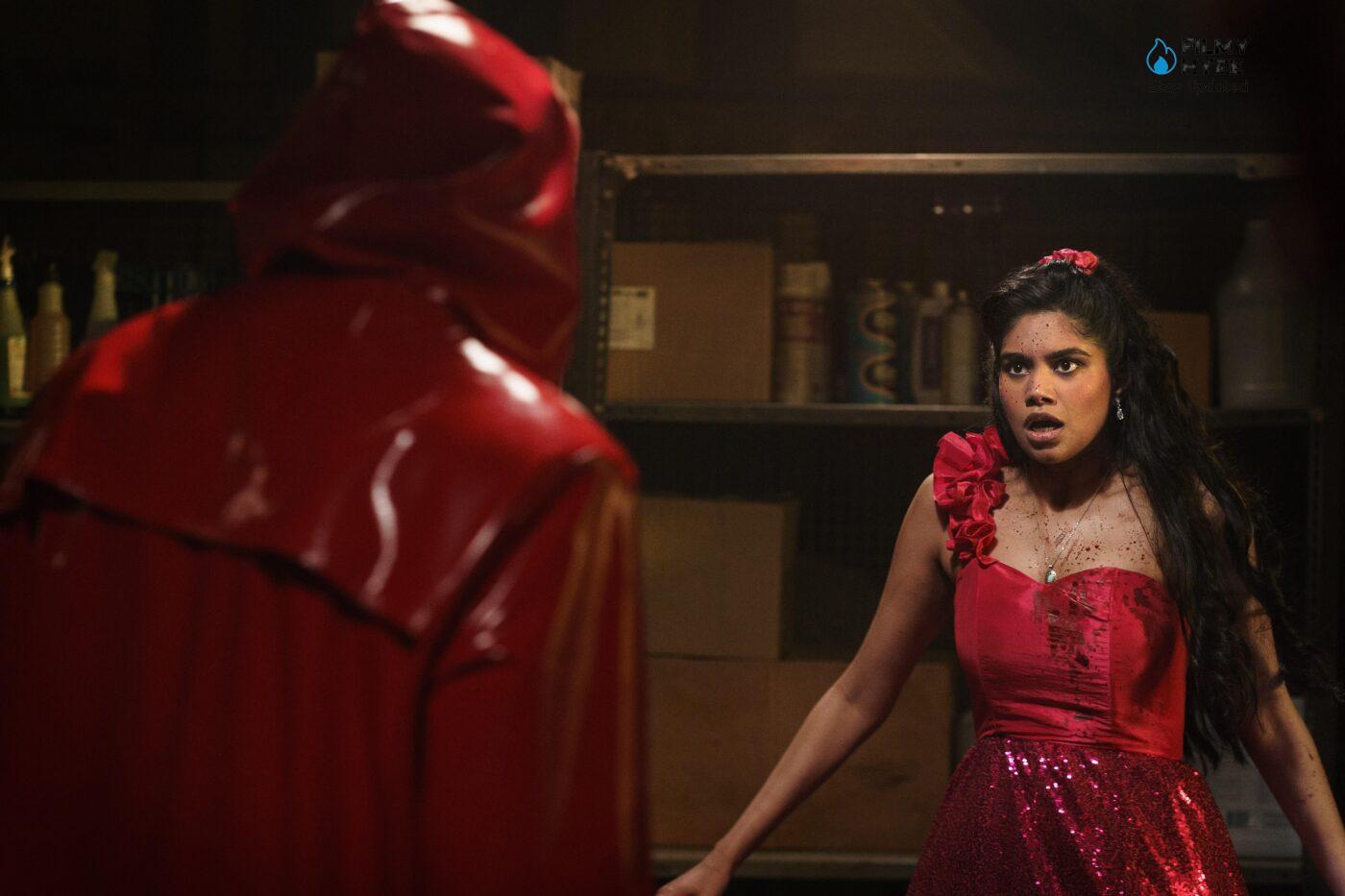
Nothing new under the sun. “Prom Queen” differs from what worked in the first three films of the film saga of “Fear Street”. The films of 2021, despite their adolescent aura and in citation of iconic films of the American slasher, had a narrative original and intriguing, accompanied by a direction capable of creating emotionally intense sequences referring to horror cinema. Some scenes managed to shake, at least to a small extent, even the most spectators accustomed to the genre, thanks to moments visually gruesome. These three films, although they cannot be defined as slasher masterpieces, keep, beyond their script limits, a narration articulated, complex, and even original, capable of capturing the attention of the public, pushing it to the vision of a cinematographic trilogy. “Prom Queen,” conversely, has no originality, revealing a typical teenage slasher, linear and banal, both in the construction of the characters and in narrative progression. The only effective positive note is the twist inserted in the third act, linked to the discovery of the killer, one found all in all original, which manages to make the last part of the story a more interesting twist.
However, the motive of the killer (without revealing too much) appears unrealistic and absurd, leaving the feeling that the killer—or killers—are both crazier and more, with a motivation behind the murders that results in ridiculous and meaningless, if looked at with an objective look. Despite the banality of history and the superficiality of the characters, where the narrative figures are highly stereotyped (Megan Rogers, Lori Granger, Tiffany Falconer), it must be recognized that “Prom Queen” does not present obvious plot holes, although the motive of the killer remains at times grotesque. The narration, despite being light and based on a theme little in-depth, linked to self-confidence and to fear of being insignificant, avoids those annoying writing errors that had penalized the initial trilogy of “Fear Street”.
If the latter, at the level conceptual, it turned out more original and fascinating compared to “Prom Queen” at the same time, he suffered from obvious gaps in the script, with some narrative junctions that, at the end of the day, did not come back completely. “Prom Queen” instead, thanks to its linearity is narrative simplicity, maintains a structure that is solid, consistent, without obvious inconsistencies, but completely sins of that bloody verve that a true slasher, also adolescent, should possess. The main problem of TV movie “Prom Queen ” (because it is undoubtedly not a cinematographic product) does not lie so much in his superficial writing or the lack of originality—given that the feature explicitly calls iconic films as “Halloween – The Night of the Witches” (1978), the saga of “Scream ” is “Carrie – Satan’s gaze ” (1976)—how much rather in its inability to build tension. It is a problem essentially directorial, not a script, since the latter includes numerous bloody scenes which, however, because of the direction adopted, result without adrenaline, restlessness, fear, and suspense. Indeed, the sequences that should have shaken the viewer appear cold is sterile, leaving the audience impassive in the face of the murders. If on one side the defacements on the faces and limbs of the characters are shown with visual care, on the other do not provoke any emotional reaction.
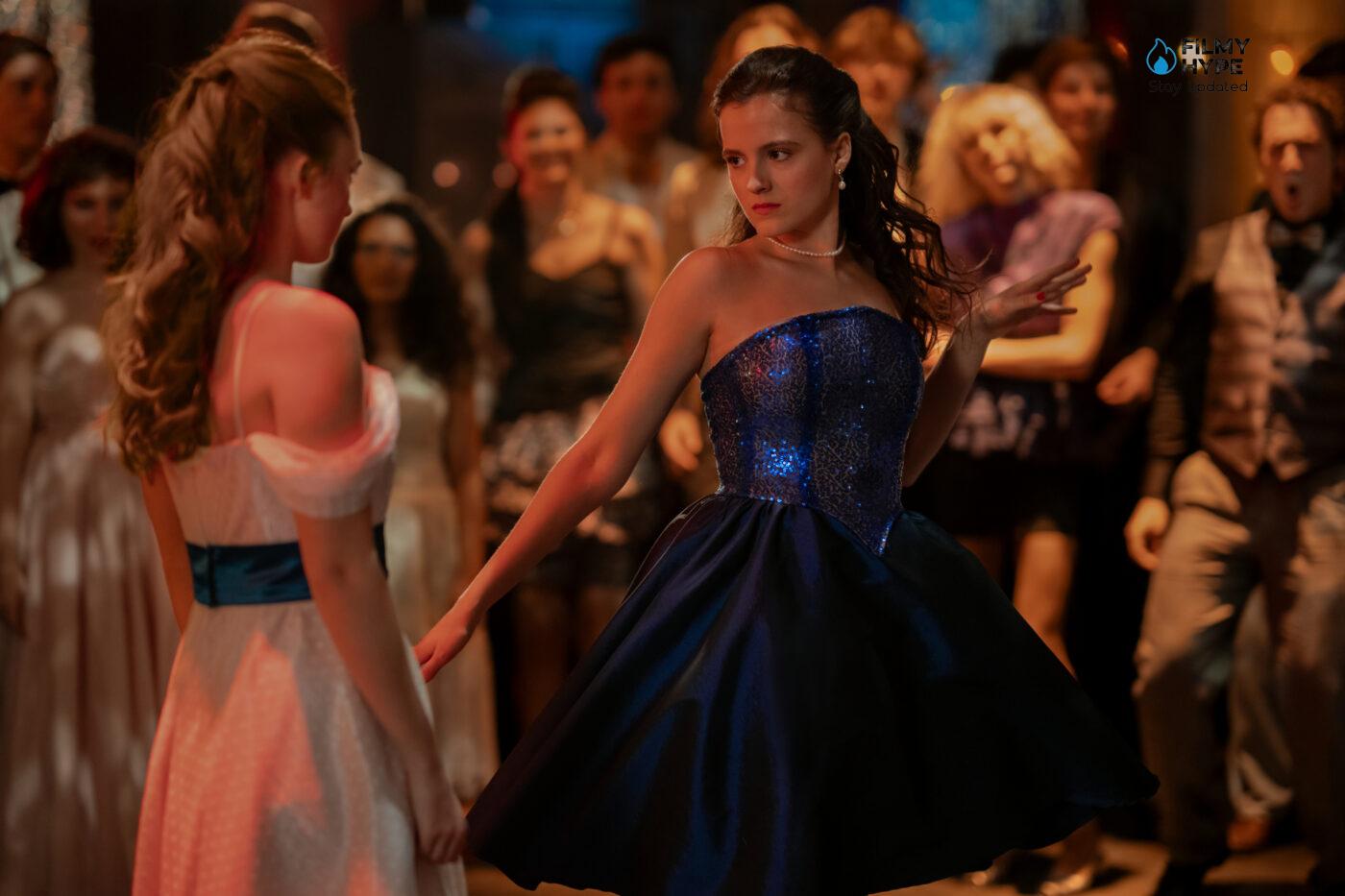
The Achilles heel, therefore, resides in the directorial choices, which make these excessively cold murders. The only scene capable of disturbing and involving the public is where Megan pretends to cut off your arm with a butcher knife during a school lesson. This well-turned sequence transmits realism and horror, while the other killings are artificial, also because of mediocre interpretations, depriving the film of any type of suspense. While remaining an enjoyable film, “Prom Queen” presents one simple and superficial script, accompanied by one photography which recalls, on a stylistic level, “Fear Street Part Two: 1978” and the series “Stranger Things”, replicating the same lighting adopted in the series of brothers Duffer. What instead stands out is their soundtrack, absolutely fine, that seems to pay homage to the old horror movies years ’80, with some sounds that evoke the cinema by Dario Argento and of Romero
We repeat it, Fear Street: Prom Queen, as well as the other chapters, and it works and runs smoothly. Aware of how cumbersome the comparison can be, we use it responsibly to make the idea clearer: it could be the approach to Scream which meets the shades of Nightmare, with a pinch of Mean Girls. Compared to others, Fear Street by Netflix and Prom Queen a films, as the director specified. However, some small and tasty details link to the previous titles (or later, if we think about the chronological order in which to see them), making the storyline even more three-dimensional. Of course, there are several falls, and different – obvious – naivety of narration that croak concerning the general tone: a head that rolls in the middle of the dance, in addition to arousing a certain hilarity, seems disconnected from a contextualized credibility within the boundaries of the slasher genre, ending up becoming a mere sketch.
On the other hand, however, Márk Györi’s photography captures the meaning of the 80s (although in their inflated aesthetics), just as the general breath works concerning the centrality of the prom (told to the cinema countless times, but always proving fascinating), absorbing the expectation of girls and boys in the grip of performance anxiety. Here, this is the nuance that works most: the reworking of the concept of celebrity, the pointed thorns of unscrupulous ambition, arrogance, aspiration to perfection that generates monsters. A sort of anteroom analogous to what happens today on social networks. In short, Fear Street: Prom Queen, in its studied staging and its pop spirit, explores our participation, reworking, in the end, the very idea of a final girl through a final shot that alone is worth watching the film.
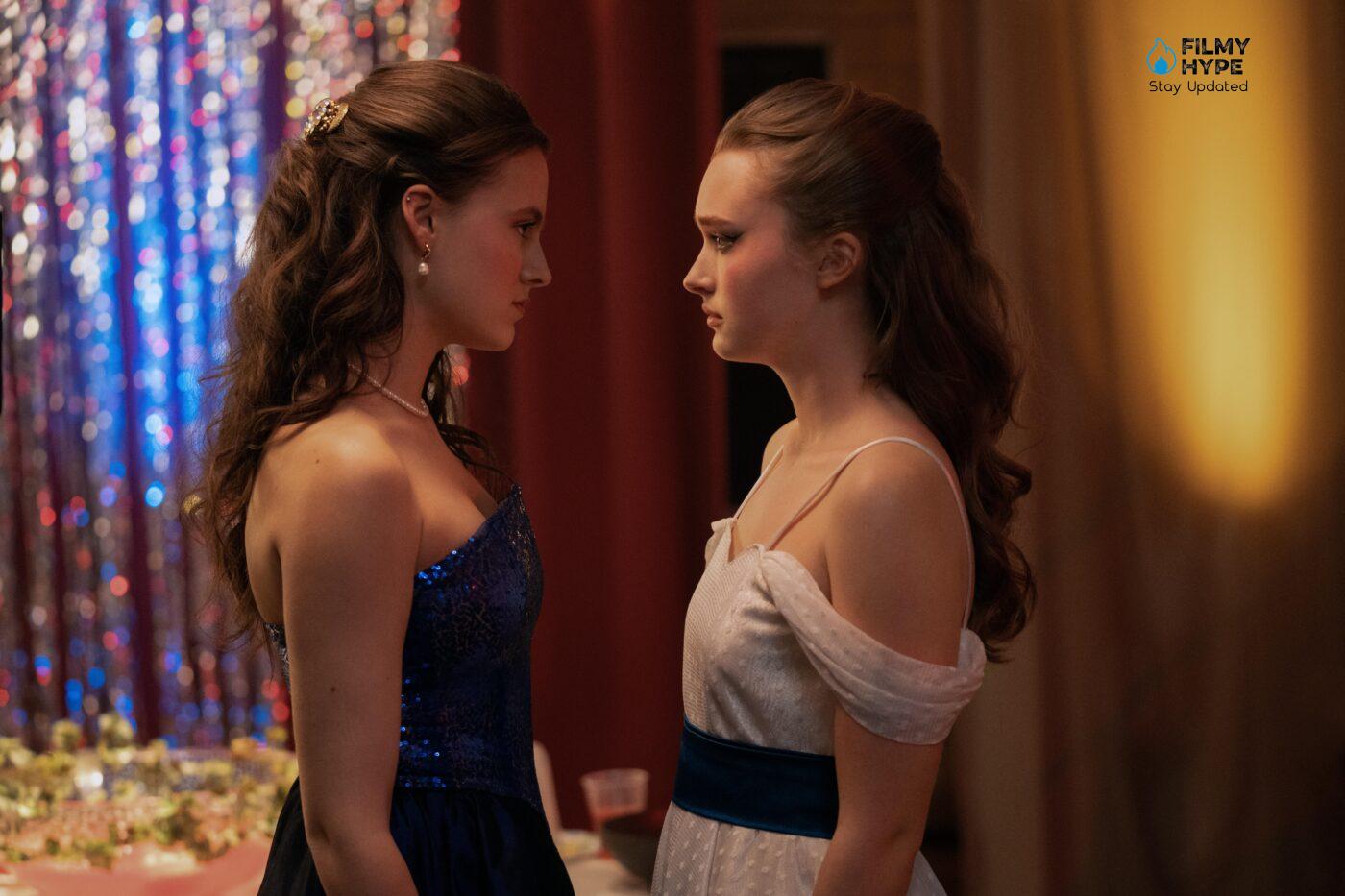
Prom Queen fails to recreate the narrative strength of the original trilogy of Fear Street, resulting in a flat and tension-free product, resulting in a film for kids who want to try their hand at horror cinema for the first time. Although the story is linear and without obvious plot holes, the film suffers from a little incisive direction, unable to convey suspense or uneasiness in the bloodiest scenes. The lack of depth of the characters and the absence of a solid narrative construction make this iteration of the saga a forgettable work, which cannot leave its mark on the panorama of adolescent slashers.
Fear Street: Prom Queen Review: The Last Words
Fear Street: Prom Queen does not reinvent the genre, but enjoys playing with it. The direction captures the 80s aesthetics well and the social anxiety of school dance, while the story touches on current themes such as social pressure and identity. The rhythm is inconstant and the murders are not very incisive, but the dynamics between the protagonists give sincere moments. The film is based on atmosphere and irony rather than tension. A real flicker is missing, but the result entertains. A minor title of the saga, but with its dignity. The Netflix Fear Street saga continues to amaze. Combining the nostalgia effect with a curated aesthetic, and inspired by the novels of R.L. Stine, Fear Street: Prom Queen, directed by Matt Palmer, offers ninety minutes of pure slasher entertainment. Behind the year-end dance anxiety, a trail of blood that leaves no way out, resulting in an amused examination of how perfectly ambition generates monsters. Although not comparable to the masters of the genre, the film recreates an atmosphere reminiscent of Scream and Nightmare, with a touch of Mean Girls.
Cast: India Fowler, Suzanna Son, Fina Strazza, Chris Klein, David Iacono, Ella Rubin, Ariana Greenblatt, Lili Taylor, Katherine Waterston
Directed By: Matt Palmer
Streaming Platform: Netflix
Filmyhype.com Ratings: 3/5 (three stars)

Fear Street: Prom Queen Review: A Slasher Saga That Continues To Amaze (Thanks to the Nostalgia Effect) | Filmyhype
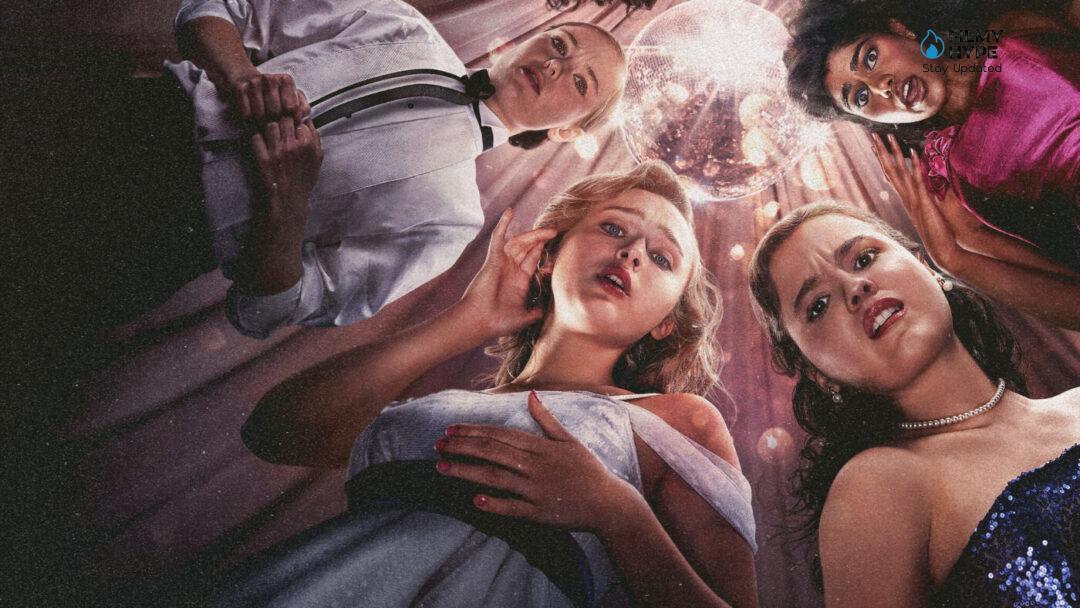
Director: Matt Palmer
Date Created: 2025-05-23 11:44
3
Pros
- Good aesthetic reconstruction of the 80s
- Interesting dynamics between the characters
- Light atmosphere but with successful social subtexts
Cons
- Poor incisiveness of horror scenes and murders
- Sharpening rhythm and often diluted tension



